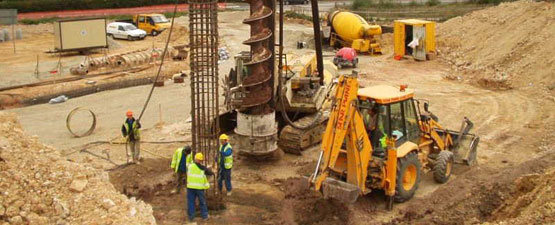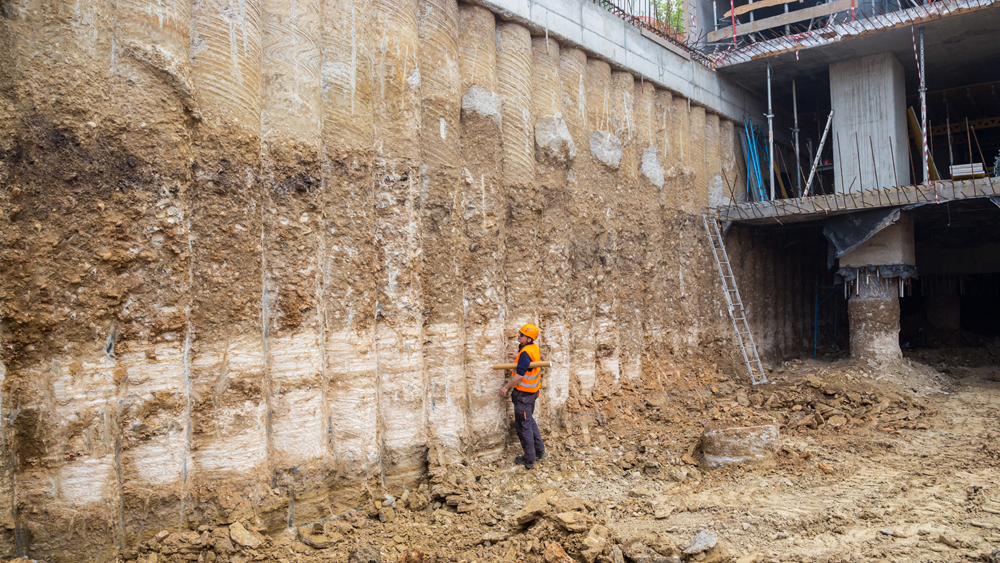Project Geotechnical Engineer for Tailored Website Assessments
Wiki Article
A Thorough Exam of the Providers Offered by Consulting Engineers in the Field of Geotechnical Design: From Site Examination to Task Application
Consulting engineers in geotechnical design play an essential role in the successful execution of building and construction projects, starting with thorough website investigations that disclose important subsurface problems. Their proficiency encompasses soil residential property analyses, ecological effect evaluations, and the mindful monitoring of job implementation, making certain alignment with security and sustainability requirements. Each phase is interlinked, presenting one-of-a-kind challenges and factors to consider that can considerably affect project outcomes. As we discover these vital solutions, it ends up being evident that recognizing their ramifications is important for reliable project administration and threat mitigation. What details lie within each of these phases that require our focus?Value of Geotechnical Engineering
Geotechnical design is a vital discipline that underpins the security and sustainability of civil framework projects. By recognizing the mechanical actions of dirt and rock products, geotechnical designers assess the viability of sites for various constructions, including buildings, bridges, and dams. This fundamental analysis makes certain that frameworks can hold up against environmental aspects and lots without experiencing failure.The importance of geotechnical design expands past plain architectural security; it also includes environmental stewardship. Proper geotechnical evaluations add to lessening the environmental impact of building and construction. Via careful examination of soil buildings and groundwater conditions, designers can create foundations and maintaining structures that minimize threats such as erosion and landslides, promoting long-term stability.
Moreover, geotechnical design plays an important role in job expense administration. geotechnical works. By identifying prospective problems early in the design phase, engineers can advise appropriate solutions, hence staying clear of costly delays and redesigns during construction. This aggressive technique not only boosts job performance but additionally considerably reduces threats related to unexpected site problems
Site Investigation Methods
Effective site examination methods are important for collecting exact data regarding subsurface conditions prior to building and construction. These techniques assist in the understanding of the geological and hydrological setting, which is vital for ensuring the stability and safety of proposed frameworks.Usual techniques employed in website investigations include borehole exploration, which enables engineers to extract soil samples at numerous midsts, giving insights right into stratification and product kinds. Additionally, geophysical studies, such as seismic refraction and electric resistivity, offer non-invasive methods to evaluate subsurface features over larger areas. These techniques can help identify abnormalities without substantial excavation.
Examination pits are another valuable technique, offering direct observation of soil layers and making it possible for in-situ screening. geotechnical works. This approach is particularly useful for shallow excavations and can aid examine groundwater degrees. Moreover, cone penetration examinations (CPT) are increasingly made use of, as they supply continual accounts of dirt resistance, which helps in determining dirt stamina and layering.
Each of these techniques plays an important role in developing a comprehensive understanding of website problems, enabling consulting engineers to make enlightened choices and suggestions throughout the job lifecycle. Exact data collection throughout the site examination stage is crucial to mitigating threats and guaranteeing effective task implementation.
Soil Home Assessment

The evaluation procedure usually involves a combination of research laboratory tests and area examinations. Key homes such as shear strength, compressibility, permeability, and wetness material are examined to figure out the dirt's viability for construction functions. Basic examinations, consisting of the Atterberg restrictions, Proctor compaction, and triaxial shear examinations, are typically utilized to collect information on soil actions.
In addition to these tests, in-situ techniques such as the Requirement Penetration Test (SPT) and Cone Infiltration Test (CPT) use useful insights into dirt stratigraphy and thickness. The outcomes of these evaluations notify engineers about prospective difficulties, such as dirt liquefaction or negotiation, allowing them to devise proper reduction methods.
Environmental Influence Analysis
Environmental effect examination plays a critical duty in the planning and implementation of engineering jobs, specifically in geotechnical design. This procedure entails assessing the prospective environmental repercussions of suggested jobs on dirt, water, air top quality, and surrounding communities. Consulting engineers make use of various methods, including website analyses, modeling, and area studies, to identify and measure these influences.The evaluation normally begins with the identification of baseline ecological problems, which offers as a reference for anticipating potential modifications. Designers assess elements such as erosion, groundwater contamination, and environment interruption, making sure that all relevant ecological policies and standards are adhered to throughout the project lifecycle. Stakeholder involvement is additionally an indispensable component of the analysis procedure, as it fosters communication in between job programmers, regional areas, and governing bodies.
Moreover, reduction methods are developed to address recognized impacts, permitting designers to recommend choices or modifications to forecast layouts that enhance sustainability. This positive strategy not just reduces adverse results on the setting however likewise promotes public trust fund and conformity with ecological regulation. Inevitably, efficient environmental influence evaluation reinforces the overall honesty and stability of geotechnical engineering projects, sustaining accountable geotechnical geologist development practices.
Job Implementation and Surveillance

Surveillance is a crucial element of task application. Designers use various strategies, such as instrumentation and area tests, to assess dirt behavior and architectural actions in real-time. This constant monitoring enables the recognition of any type of discrepancies from anticipated efficiency, enabling for timely treatments to minimize threats.
In addition, seeking advice from engineers preserve open interaction with specialists and stakeholders throughout the process. Normal website assessments and development reports guarantee that all events are informed about job standing and any arising problems. By fostering cooperation and openness, speaking with designers facilitate a much more efficient execution process, consequently improving job end results.
Eventually, efficient project implementation and monitoring not only maintain safety and quality standards however likewise contribute to the total success of geotechnical jobs, ensuring they satisfy their desired objectives sustainably and responsibly.

Conclusion
In final thought, the function of speaking with designers in geotechnical engineering encompasses a crucial series of solutions that make sure job success. Inevitably, the complex contributions of speaking with engineers are important in resolving the complexities of geotechnical difficulties in contemporary design jobs.Report this wiki page